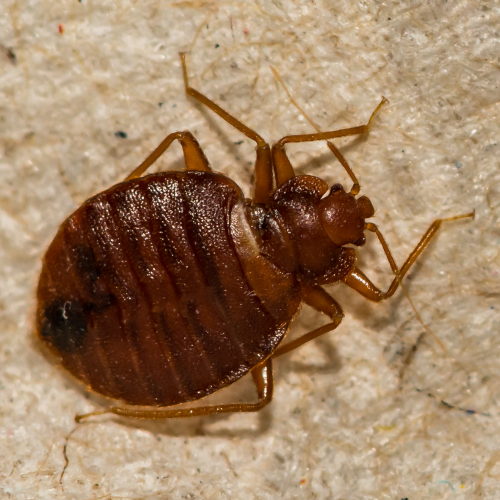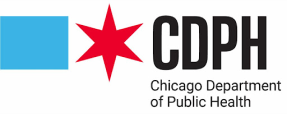Bed Bugs


Bed bugs are small, flat, wingless insects. They feed on blood and can be a nuisance for individuals. They are named for their tendency to live on mattresses or other parts of a bed. They can be found in homes, condominiums, apartments, hotels, schools, dormitories, shelters, offices and many other places.
In 2013, the City Council passed an ordinance to help address the problem of bed bugs. That ordinance is available here. The requirements established by this ordinance are detailed below.
Rental Housing
The ordinance established several requirements for both landlords and tenants. Among these is a requirement that landlords must provide a brochure on bed bugs to tenants when signing a new or renewing an existing lease or other rental agreement (note this requirement does not apply to owner-occupied buildings containing six units or less). The brochure lists all of the requirements of the ordinance for both landlords and tenants. Download the "Preventing BedBug Infestations in Apartments" brochure below:
- English: 8.5" x 11" | 8.5" x 14"
- Spanish: 8.5" x 11" | 8.5" x 14"
- Chinese: 8.5" x 11" | 8.5" x 14"
- Polish: 8.5" x 11" | 8.5" x 14"
Condominium and Cooperative Buildings
All governing associations need to have a written plan to address bed bugs. A sample plan was created to assist associations in developing their plans. That sample plan is available here and lists all of the requirements of the ordinance for those who own units within condominium or cooperative buildings. The sample plan also refers to a fact sheet that can be provided to unit owners. That fact sheet is available here.
Other Requirements
- Requires every business licensed by the City of Chicago to provide pest control services when a bed bug problem occurs on their premises.
- Prohibits hotels or other establishments that provide sleeping accommodations from renting rooms with a bed bug problem.
- Prohibits the disposal of any bed bug infested item except when the item is totally enclosed in a plastic bag and labeled as being infested with bed bugs.
- Prohibits the recycling of any bed bug infested item.
- Requires sellers of secondhand bedding to provide notices to consumers that the bedding is made in whole or part from secondhand material or has been previously owned or used.
- Requires sellers of new and secondhand bedding to inspect it and if found to be soiled, malodorous or infested with pests, prohibits them from selling it and requires it to be properly disposed.
- Defines a Pest Management Professional. Download guidance on how to meet the requirements to become a Pest Management Professional.
Bed Bug FAQs
Bed bugs are small, flat, wingless insects. They feed on blood and can be a nuisance for individuals. They are named for their tendency to live on mattresses or other parts of a bed. They can be found in homes, condominiums, apartments, hotels, schools, dormitories, shelters, offices, and many other places. Unlike some other types of insects, dirty living conditions do not attract bed bugs.
Adult bed bugs are roughly the size, shape and color of an apple seed: 1/4 of an inch in length and light or reddish-brown in color. Immature forms of bed bugs are smaller and lighter in color. Eggs are tiny and white. You should be able to see the adult form with your naked eye, but may need a magnifying glass to see the immature forms or eggs. Bed bugs can be easily confused with other small insects.
Bed bugs can be found anywhere people sleep, sit or lay down. They can be found on mattresses and box springs, especially near the piping, seams and tags, and in cracks and crevices of head boards and bed frames. They can also be found in other furniture, especially in the seams and zippers of chairs and couches, in the folds of curtains, in drawer joints, in electrical outlets, in baseboards, behind picture frames and in other tight spaces.
No, bed bugs are not known to transmit disease.
Yes. Their bites, like those of other insects, may cause an allergic reaction with swelling, redness and itching. Their presence may cause people to be anxious and lose sleep.
Bed bugs can get into a home by hitching a ride on mattresses or other bedding, furniture, clothing and baggage. Once inside, they can crawl from one room to another. If you live in an apartment building or condominium building, they can get into an adjacent unit by crawling through small cracks or holes in walls or ceilings or under doors. Because bed bugs do not have wings, they cannot fly into or around your home.
Bed bugs can be found most anywhere, so always be aware of your surroundings. Always check furniture and bedding, especially those bought secondhand, for signs of bed bugs before you buy them. Never bring items that someone else has disposed of into your home, as these items may be infested with bed bugs. When traveling within or outside the U.S., always inspect the bed and furniture, keep suitcases off the floor and the bed and inspect them before you leave. When returning home from travel, always inspect your luggage carefully for signs of bed bugs before you bring the luggage into your home.
Reduce clutter, especially in bedrooms. Seal cracks and crevices with caulk. Store unused items in sealed containers or plastic bags. Wash and dry bedding often. Check beds and furniture for signs of bed bugs. Purchase mattress and box spring covers.
Though bites may be an indicator of a bed bug infestation, they are generally a poor one as not all people will react to bed bug bites or the bites may be due to other reasons. The best indication of an infestation is to look for physical signs of bed bugs such as live or dead bed bugs, eggs or eggshells or tiny dark spots or reddish stains on mattresses or other places where bed bugs live.
Disposing of these items is probably not necessary unless directed by a pest control company. If there are items that do need to be disposed of, do so carefully by sealing them in plastic bags so as to not spread bed bugs further, and labeling the item as being infested with bed bugs. Do not recycle any bed bug infested items.
- Wash all linen and other infested materials (including clothing) in hot water, then after drying the clothes, keep them in the dryer and dry for an additional 20 minutes on the highest setting.
- Put un-washable or “dry clean only” materials in the dryer on the highest setting for at least 20 minutes.
- If you have to launder in a common area of the building or at a laundromat, make sure all items are enclosed in a bag before leaving your unit to prevent the further spread of bed bugs.
- Once all these materials are laundered and dried, seal them in clean bags so bed bugs can’t re-infest them.
Additional Resources
Guidance on how to choose and work with a pest management professional.
- Chicago Department of Business Affairs and Consumer Protection (BACP)
- Illinois Department of Public Health/Bed Bugs
- Everyday Bed Bug Prevention Tips
- United States Environmental Protection Agency
- University of Minnesota Bed Bug Information Line: 612-624-2200, 1-855-644-2200, bedbugs@umn.edu
- University of Minnesota Bed Bug resource page




